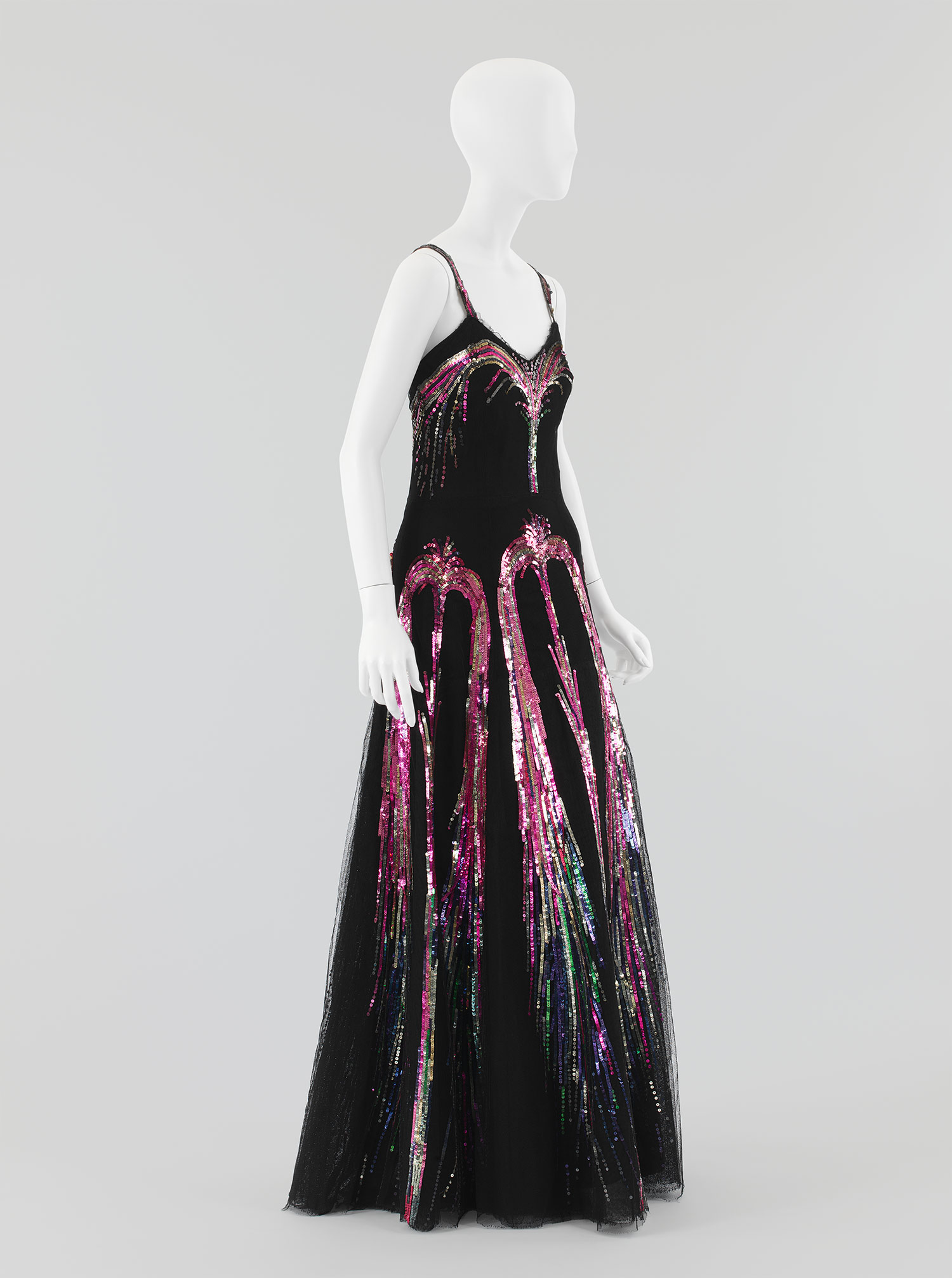 |
| An original CoCo Chanel gown from 1938. |
The cost to make a piece of clothing is probably worth less than 50 cents. A cotton shirt, for example, an incredibly generic piece of clothing, is worth just as much as one of Diane von Furstenburg’s signature rap tops, which usually run for hundreds of dollars, depending on which item. These are factual statements that cannot be argued- cotton is cotton is cotton is cotton.
However, a sheet of canvas usually runs for about $6, and it is likely worth even less. Same goes for paint; you can get it as cheap as you want (if you know where to look!). Imagine I have my hands on both, and I paint, well, a painting. Now, let’s add a little bit more to the mix- say I’m in the same room as Leonardo Da Vinci, he has access to the same products, and we’re both painting our lives away. Now, let me ask you a question- we both have access to the same canvas, paint, and tools, but whose final piece of art would be worth more, even though we both invested the same amount of time, money, and effort into our respective works?
I’m certainly hoping you didn’t choose me for this hypothetical question, because we all know Leonardo would blow me out of the water. The point I’m trying to make is this (and this is just my own definition of art-and I’m sure it varies from individual to individual): artwork, from a painting, piece of music, or fashion design, is valued according to the artist’s innovative ability to create work that has a timeless capacity to aesthetically arouse its audience (whether it’s an art critic, a music enthusiast, or, in my case, a shopaholic...) Anyway, in this brief blog post, I plan to argue that exceptional pieces of clothing are priced based on the mind of the designer or artist, rather than an overall interest in gaining a profit from, and this is hypothetically speaking, a %5,000 mark-up.
Of course, we all know a piece of clothing is just a piece of fabric worn to keep us covered, and designers know this too. The central difference is that designers (really, really good designers) view fashion design as an art, a science, and everything in between. The level of precision in, for example, an original CoCo Chanel gown is absolutely, mind-blowing-ly, disgustingly perfect. Every atomic particle in her dresses had a purpose, and every fiber in her dresses’ construction was destined to make every woman they embraced feel and look like the most beautiful person in the world. Her dresses made a statement, encouraging women to feel empowered by their femininity, especially during a time of such gender inequality.
And just think about it, though the types of fabrics used in a Diane von Furstenburg piece are similar, if not the same as those used in a plain T-Shirt you could get down the street, her mind surpasses so many in her field. When we purchase true artistic pieces of clothing, we are thanking their creators for their mind, their vision, and their genius.
No comments:
Post a Comment